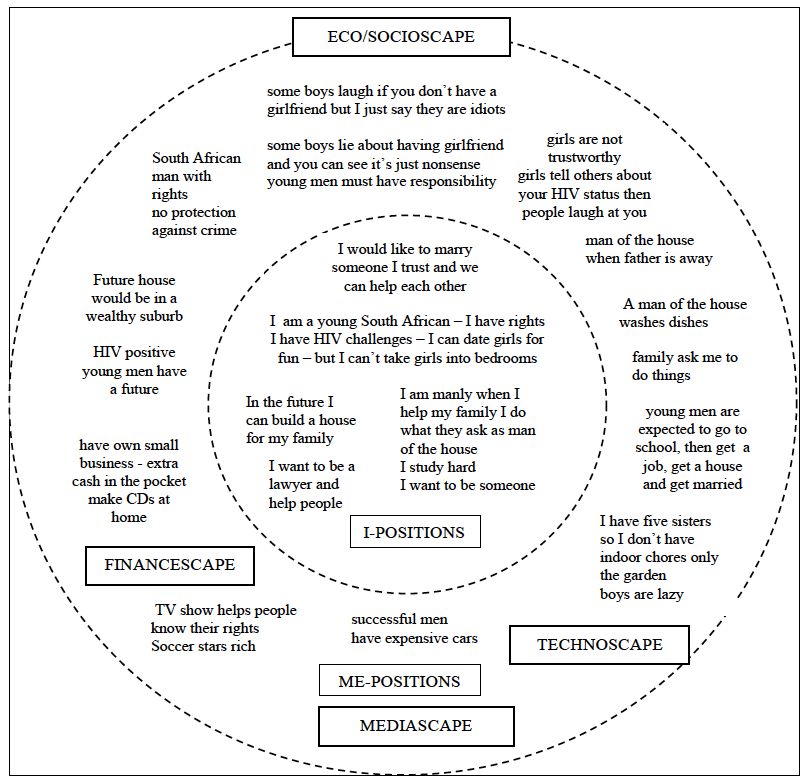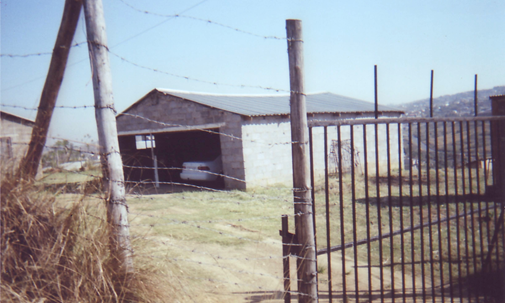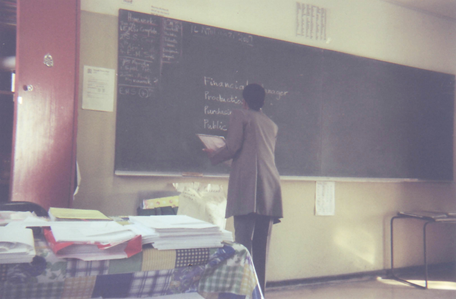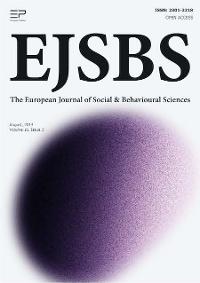Abstract
For adolescent boys living with HIV, an emerging identity as a person living with HIV intersects with the construction of a masculine identity, conceptualised as situated positioning in relation to hegemonic masculinity. The research focus was to identify constructions of young masculinity at the intersection with identity as an HIV positive person, considering the reciprocal influence of masculine identity and emerging HIV positive identities. The concept of hegemonic masculinity was combined with Dialogical Self Theory in conceptualising masculine identity construction as active positioning. Visual methods (autophotography, biographical drawings and reflective interviews) were combined with semi-structured interviews and focus groups within an interpretive paradigm. Participants were all adolescent boys enlisted from an HIV support group, forming a purposive sample (N=7). Mixed data analysis methods highlighted the active dialoguing of situated masculine identity positions against hegemonic masculinities. Analysis revealed the complex processes of positioning a viable masculine identity in challenging contexts of health, spatial contexts, material conditions and hegemonic imperatives. The findings were potentially relevant for practice and policy promoting of gender equality and gender-equitable masculinities, such as participatory research and gender- based interventions.
Keywords: Autophotography, Dialogical Self Theory, hegemonic masculinities, identity positions, masculine identity
Introduction
There has been burgeoning of South African research in men and masculinities over the past twenty years where there has been an emphasis on the concept of hegemonic masculinity particularly (Morrell, Jewkes, & Lindegger, 2012; Morrell, Jewkes, Lindegger, & Hamlall, 2013). Much local research has been compatible with a model of multiple hegemonic masculinities applied in areas of health, education, social issues and psychology (Morrell et al., 2012). Over the past ten years, psychologists in South Africa have produced a variety of studies specifically focused on adolescent boys or young men (Morrell et al., 2012). This research has had varying focuses including young masculinity and disability (Joseph & Lindegger, 2007), violent behaviour and peaceful alternatives (Hamlall, 2013), peer group counsellors (Davies & Eagle, 2007), group constructions and homophobia (Blackbeard & Lindegger, 2007), ideal masculinity (Lindegger & Maxwell, 2007) and the acceptance or rejection of peer-validated masculinities (Langa, 2010). The relevance of such research included gender-responsive education, health risk and prevention, health services provision and programmes to address gender violence and interpersonal violence (Gibbs & Jobson, 2011; Hamlall, 2013; Morrell et al., 2012).
The current research was a participatory study with seven adolescent boys (N=7, age range 13 to 16 years) using an interpretive approach. The research setting was a clinic-based HIV support group in KwaZulu-Natal Province, South Africa. The data collection took place over six months and involved multiple methods of data collection. These were conventional qualitative methods (semi-structured interview, focus group) and visual methods (autophotography and photo- elicitation interview, biographical drawing, reflective interviews).
Gender research in the Southern African region has highlighted the association between gender inequitable masculinities and a range of social problems including normative sexual entitlement and rape perpetration, poverty and disadvantage, unemployment, gendered violence and interpersonal violence (Jewkes, Sikweyiya, Morrell, & Dunkle, 2011). Researchers have identified links between normative masculinity and health risk behaviours such as sexual health risks, physical risk-taking and poor health compliance, particularly with regard to young men and male adolescents (Harrison, O’Sullivan, Hoffman, Dolezal, & Morrell, 2006; Lindegger & Quayle, 2009). Research and practice have also revealed multiple constructions of young masculinity, varying from traditional patterns to alternate and progressive masculinities (Langa, 2010; Lindegger & Maxwell, 2007). Researchers have observed that equating young masculinity with problematic masculinity neglects transforming opportunities for sustaining gender-equitable masculinities (Lindegger & Quayle, 2009). Some research has focused on social structural and instrumental aspects of masculinity which can be to the neglect of masculine subjectivities, a key to the transformation of masculinities (Davies & Eagle, 2007; Lindegger & Maxwell, 2007, Mfecane, 2008).
In the current study, masculine identity was defined as identity positioning in relation to hegemonic masculinity, considered to be a set of ideals or imperatives for masculine performance (Korobov & Bamberg, 2007). Dialogical Self Theory (DST) (Hermans & Hermans-Konopka, 2010) was applied as a conceptual framework for understanding masculine identity as voiced self- positioning in contexts of time, space and movement (Hermans & Hermans-Konopka, 2010). Hegemonic masculinities (Connell & Messerschmidt, 2005) were conceptualised as dominant or centrally positioned gendered identities in the self-society dialectic (Hermans & Hermans- Konopka, 2010). Masculine identities were understood dialogically as self-positions situated in real and imagined time, space and movement contexts (Hermans & Hermans-Konopka, 2010). As voiced self-positions, masculine identities were considered situated in relation to other voiced positions in contexts of time, space and movement. Masculine identities could also be foregrounded or backgrounded, central or peripheral, dominant or subordinate and relatively internal or external in the self-society dialectic or extended self-system (Hermans & Hermans-Konopka, 2010).
From the DST framework, masculine identities were considered to be voiced, situated self- positions, actualised in power relations, as depicted in a schematic (Figure 1) based on the DST concept of ‘positions’ (Hermans & Hermans-Konopka, 2010). This schematic depicted some of the possible positions of voiced self positions in the extended self-system and was comparable with the power differences of different forms of masculinity in Connell’s model of multiple masculinities and hegemonic masculinity (Connell & Messerschmidt, 2005).
The schematic (Figure 1) represents power relations in self-positioning as the vertical axis and space-time distance/space as the horizontal axis as described by Hermans and Hermans-Konopka (2010).

The dialogical idea that power differentials exist throughout the individual self-system is compatible with the hegemonic masculinity concept in the sense that hegemonic masculinity functions as an ideal standard which sustains gendered power relations and against which other forms of masculinity can be designated ‘subordinated’, ‘marginalised’ or ‘complicit’ (Connell & Messerschmidt, 2005; Messerschmidt, 2012).
Problem Statement
Our research problem was to identify positioning of masculine identity by adolescent boys in the context of an emerging identity as a person living with HIV. We were interested in how the boys constructed and managed a viable masculine identity at the level of personal subjectivity and social processes in relation to perceived ideal standards or social imperatives of masculine identity. Therefore, our interest was in how the boys with emerging identities as persons living with HIV positioned a masculine identity in relation to hegemonic masculinity.
Research Questions
Working from an interpretive research paradigm, we were interested in (1) how adolescent boys living with HIV positioned a masculine identity in relation to hegemonic masculinity, (2) how having an emerging identity as an HIV positive person influenced positioning of a masculine identity and (3) what was the influence of masculine identity upon an emerging HIV positive identity.
Purpose of the Study
The broader purpose of the research was to understand how adolescent boys could develop viable, alternate and gender-equitable masculine identities against pressures to conform to problematic masculinities. The findings would be potentially relevant for policy, programmes and interventions to support gender-equitable masculinities. There was also potential relevance for young masculinity studies in developing a dialogical understanding of masculine identity as positioning in the self-society system.
Research Methods
Mixed methods were combined within an interpretive, qualitative paradigm (Silverman, 2011), appropriate for the research focus on personal subjectivity and social processes. The sample was a purposive, homogenous sample consisting of seven Black African (Zulu) male participants with a mean age of 14 years 5 months at the start of the study and an age range from 13 years to 16 years. Ethical consent procedures followed recommended consent and assent processes appropriate for research with adolescent minors (Lasser & Thoringer, 2003). These included assent and consent procedures, group consent process and the ethical use of visual methods following ethical procedures for autophotography research (Strack, Magill, & McDonagh, 2004). The participants were adolescent boys (N=7) enlisted from a mixed-gender, clinic-based support group for adolescents with HIV. The sampling to saturation in the sample was in the optimal range for credible qualitative research with a homogenous sample with sufficient depth to the data (Kelly, 2004).
The interviewing team consisted of the first-author researcher and two Zulu-speaking interviewers. The interviewing team was diverse for age and gender. The Zulu-speaking interviewers were support group facilitators. Data collection took place over a six-month period and involved several meetings of the interviewing team with participants. Interviews were conducted in Zulu language and/or English, following the preferences of the interviewees. Post-interview discussion, process notes, and researcher diaries were included in the research process as sources of reflexivity.
The first phase of data collection consisted of semi-structured interviews and focus groups. Semi-structured interviews followed an interview schedule designed to elicit rapport and open- ended conversation about personal and social constructions of masculine identity. As suggested by Lasser and Thoringer (2003), the process was aimed at privileging the voice of the interviewee and not rigid adherence to the interview schedule. Focus groups used the same interview schedule as the individual semi-structured interviews in order to elicit parallel group responses and to highlight similarities and differences between individual and group subjectivities. Advantages of the focus group method included enhancing validity of the individual interviews through corroboration of data and privileging participants’ voices over the interviewers (Babbie & Mouton, 2005). The comparison of group and individual data has been useful in other young masculinity researchers for highlighting peer-validation of masculine identities and for identifying group versus individual constructions of masculinity (Blackbeard & Lindegger, 2007; Joseph & Lindegger, 2007, Mfecane, 2008).
The second phase of data collection consisted of autophotography and photo-elicitation interviews, following autophotography methods from similar studies (Blackbeard & Lindegger, 2007; Noland, 2006). Participants were invited to record images on single use cameras (autophotography) to represent the statement ‘my life as a young man living in South Africa today’ and to then discuss the photographs as visual prompts (photo-elicitation). Autophotography was chosen for its benefits in ‘opening up’ interview narratives and locating interviewees’ accounts within contexts of time, space and movement (Blackbeard & Lindegger, 2007; Noland, 2006). Autophotography elicits dialogue between researcher and participant in productive ways and levels the power differentials between participants and researchers, making it particularly appropriate for research with adolescent participants (Bolzan & Gale, 2012; Didkowsky, Ungar, & Liebenberg, 2010). Autophotography is also highly compatible with current conceptualisations of masculine identity as spatialised and embodied, produced and transformed in socio-cultural and interpersonal contexts (Messerschmidt, 2012). In the process of photographing their everyday life experience, the participants engaged in an active reflection on masculine identity situated in time, space and movement, and are therefore active collaborators in the research process. In addition to photo- elicitation, some participants discussed a reflective writing task with similar prompts as the semi- structured interview.
The third phase of data collection consisted of a biographical drawing and reflective interview using the drawing as a visual prompt in combination with additional semi-structured interview questions. This additional visual and verbal data deepened the data and yielded more detailed accounts of the participants’ individual biographies and personal challenges. Prolonged engagement with participants and triangulation of methods with mixed data sources strengthened validity and reliability, as noted in methodological literature (Silverman, 2011). Participatory visual research methods enhance research credibility by giving the participant the power over what images are included or excluded (Bolzan & Gale, 2011).
Data analysis began in each phase of the data collection leading to an inductive integration process. Multiple-source data consisted of audio recordings, interview transcripts, participant- produced photographs, biographical drawings, interviewer process notes and research journals. Inductive findings were produced through iterative dialogue between several data analysis strategies applied to multiple forms of data. The data analysis strategies consisted of qualitative and quantitative content analysis of the visual data (photographs, drawings) with thematic analysis of interview transcripts and audio-recordings. More detailed analysis of the data from the third phase interviews following an adapted approach of critical narrative analysis (Saville-Young & Frosh, 2009). These analyses were worked in dialogue with one another, highlighting the contrasts and synchronies between the data sources, and noting areas of narrative rupture, silence or ambivalence in the spirit of critical narrative analysis (Emerson & Frosh, 2004; Frosh, 2007). Although complex, attempts to dialogue the mixed analyses facilitated a better integration of findings, albeit with some unresolved fragmentations (Frosh, 2007). Integration of findings was aided by the use of the Scape Model (Figure 2) adapted from DST (Hermans & Hermans-Konopka, 2010).

Each participants’ I-positions and Me-positions were mapped onto a schematic representing multiple ‘landscapes’ of the dialogical self as an extended self-society system (Hermans & Hermans-Konopka, 2010).
Findings
Positioning in relation to hegemonic masculinities
The analysis revealed at least two forms of hegemonic masculinity which appeared to have a central influence in participant accounts. Township young masculinity was closely aligned with peer group validation against which the boys took a variety of positions with varying identifications. Township young masculinity was highly ‘visible’ and signified through performances such as using alcohol and addictive substances, appearing to be sexually active, rejection of adult authority and poor school attendance. Township young masculinity was located in the present with ‘living for now’ with fatalism set against the possibility of a sudden rise to fame and material success through good fortune, or being a soccer ‘star’ or celebrity, as in the extract below:
Participant: you can be a soccer when you grow up (.) and you (.) could go by (.) those teams (.) ja like England and Germany ja you end up there (.) as a star (.)
Interviewer: who is your role model as a young man
Participant: he’s a who plays for Pirates (.) he plays soccer very well (.)
ja
Interviewer: and why do you admire him?
Participant: (.) he plays soccer very well (.) ja
Interviewer: and why do you admire him?
Participant: (.) because he’s still a young man (.) he can do whatever he wants
Township hegemonic masculinity located individuals as members of closely bound male peer groups with peer respect as a key marker. Football stars, exceptional skill and ostentatious consumerism were associated with the ‘player’ image, a young man with many sexual partners. Some of the boys varied their identifications with township young masculinity and modified the signifiers to be less overt, for example substituting a tough, aggressive survivor image with the commodified street hero. At times, ambivalence towards township young masculinity, resolved by rejecting some aspects of the perceived hegemonic standard (for example, substance use) but retaining certain other elements (for example, self-autonomous control) as illustrated in the extract below:
Participant: my friend offered me a drink/I was able to not listen to them not to be someone who does things because of friendships
Interviewer: mhm
Participant: that is what made me happy Interviewer: that you can do your own things? Participant: I can control/control myself
Aspirational young masculinity was a hegemonic masculinity based on a projected future of material success in the professional world or in business, accomplished through education and avoiding risks, which was valued by some of the participants, and rivalled township young masculinity for hegemonic status. Township masculinity was identified with immediate indicators of personal influence, whereas aspirational masculinity was configured around a successful future. A ‘hard’ form of aspirational masculinity produced a fantasy future of being both a family provider who also had many casual girlfriends. A ‘softer’ version was focused on various uses of the concept of ‘respect’, be that the respect of peers, family or the community. The boys constructed future contexts of visible success as material providers, as illustrated below.
Interviewer: what are you planning for your future (.) do you have any plans already? Participant: really huge plans [like:?] like I wish one day to have my house my accessories [] ja:: a huge car a sports car [mm] my
family [ja] (.) my wife my children living all together as a happy family (.1) I would like to see myself in the department
Aspirational young masculinity was more voiced in individual interviews than in focus group discussions, and when spoken about in focus group, was parodied or minimised with nicknames.
Dialogical dilemmas and solutions
As particularly emerged in the third phase of interviews, HIV positivity was positioned as a marginalised identity in relation to hegemonic masculinity. The boys self-consciously identified as ‘different’ from other boys, who were perceived as being better able to conform to hegemonic standards, although this was voiced more in individual interviews than in the focus groups. The boys contextually portrayed peers as either potential threats, critics and bad influences or supporters, motivators and good influences. HIV positivity appeared to be constructed as a protected space constructed within constraints which the boys had not chosen for themselves. HIV positivity was experienced with considerable ambivalence, as an internal threat, a guiding influence on behaviour and a powerful identity. In reflexive discussion, it appeared that the interviewers themselves appeared to construct ‘protective walls’ in the interviews by prompting responses that reinforced the idea that HIV was an imperative for action which required non-conformity to township young masculinity. An alternate position based on principles and values was also apparent but this was not taken up strongly by the boys, despite prejudices of the interviewers. Fragile identity positions were also apparent in attempts to identify with elements of township young masculinity in defending against being unable to conform to this hegemonic standard. This identifying resulted in contradictions such as being individually tougher than hegemonic boys in order to resist performative toughness such as physical risk-taking or alcohol use. The analysis highlighted that various discrepant positions were taken by participants in focus group discussions versus individual interviews, reinforcing that peer group was an influential social-spatial context for identity construction.
Walled solution masculinity was a context-bound identity which emerged from the constraints of being HIV positive and was mostly but not exclusively articulated by boys who aligned themselves with a collective HIV positive identity. Walled solution masculinity was a coherent masculine identity dialogued in a situation where hegemonic masculinity, particularly township young masculinity, was perceived to be unattainable. For some boys, family contexts provided a ‘protected’ space and although this was experienced with ambivalence, the boundaries of families affected by HIV formed a social ‘wall’ for a modified version of masculinity centred on self- responsibility as revealed in the biographical drawings. For some, an HIV positive identity formed a symbolic ‘wall’ in which it was possible to be acceptably masculine without outwardly conforming to hegemonic masculinity, particularly the performative signifiers. Walled solution masculinity was an emerging version with some collective coherence (a group identity). The ‘protected’ situation of HIV positivity formed a threat and opportunity for doing masculinity differently, without some of the performative expectations attached to hegemonic masculinity ‘outside the wall’. Walled solution masculinity had a relative stability as the condition of being HIV positive would not foreseeably change in the future, although for some the hope was expressed treatments would one day demolish the ‘wall’ .

Barriers of various kinds were recurrent in the photographic data and the biographical drawings, which prompted the idea of the ‘walled solution’. The outsider perspective of photographs and interview narratives sometimes positioned the viewer or interviewer outside contexts such as homes, the clinic and commodities. Photographs ‘on the inside’ prompted discussion from an interiorised perspective, facilitating reflections on life as a young man within a family, a school or peer group. 56 of the 80 photographs were of objects and environments rather than people, suggesting a sense of isolation and instrumentality which was also voiced in the interviews and depictions of losses and barriers in the biographical drawings. Displays of objects were frequent, often relevant to social and interpersonal activities, such as football team posters, displays of personal clothing items, computers and mobile phones.
There were no photographs of people playing sport or using computers or mobile phones which suggested instrumentality, isolation and a stark commodification of masculine identity. The photographs also revealed poverty and materially constrained living conditions, at odds with a commodity-based masculine identity.

Masculine identities were both actively positioned by the boys and sometimes passively positioned by collective narratives or hegemonic imperatives. Positioning was influenced by others, for example, by alternate perspectives such as the viewpoint of a traditional grandfather, an inspiring teacher or an innovative experience. The presence or absence of others and changing circumstances made positions available or constrained positions. For example, a participant became the ‘man of the house’ in his father’s absence. Another participant felt ‘boosted’ when his father encouraged his school efforts. At times, the boys were very active in negotiating positions in relation to hegemonic imperatives, ideals and practices, for example, participants presenting an autonomous ‘I-position’ in resistance to hegemonic imperatives to use alcohol and drugs. Some of the individual positioning was unstable and unanchored in contexts or collective identities, rendering the counter-hegemonic position fragile.
Across the analyses, masculine identities appeared to be situated spatially, in time, in movement and at various ‘construction sites’, school, home, township streets and in team sport, notably football. Masculine identities were developed against constructions of girls and women, and it was here that anxieties and emotional experience was most evident, as girls and women were perceived or experienced as being able to ‘unsettle’ the boys and to define their acceptability as young men. Girls and women were represented in very ambivalent ways, and the anxieties of the boys were most about the hegemonic imperative to be or at least appear to be heterosexually active. Girls were portrayed in ambivalent and contrasting ways, with some girls feared or blamed as being untrustworthy and unpredictable while others deemed ‘respectful’, patient and kind. Departing from hegemonic norms in performing household tasks was an area that exemplified conflicts between the situations in which the boys lived, hegemonic imperatives and ways that the boys attempted to maintain some identification with aspects of hegemonic masculinity.
Masculine identity was conceptualised as identity positioning in relation to hegemonic masculinities as privileged or centrally voiced positions. Broadly, the findings suggested that masculine identity positions could be dialogued and ‘redialogued’ at multiple levels – personal subjectivities, group and collective identities and through social narratives.

Interactional contexts and drastic changes in personal narratives facilitated opportunities to actualise alternate self-narratives, as described in DST (Hermans, 2004). The condition of being HIV positive faciltitated threatened opportunities for modifying positions. An HIV positive identity allowed a group identity in which aspects of hegemonic masculinity could be circumvented or modified how or how much the boys conformed to hegemonic imperatives.
Autophotography and biographical drawings drew attention to the spatial dimensions of masculine self-positioning in which participants exercised agency in depicting contexts and sites of masculinity construction. The biographical drawings and accompanying interviews highlighted the temporal domain in which masculine identity was located in time, space and movement. The study was potentially limited by sample size and the challenges of translated texts, which limited more fine-grained analysis of interview texts as attempted with critical narrative analysis. This study confirmed that hegemonic masculinity are multiple and contextual. DST provided a fresh opportunity for utilising the concept of hegemonic masculinity and was compatible with visual methods.
Conclusion
The participatory research process created opportunities for collaborative reflection and dialogue about masculine identity. Alternate gender-equitable young masculinities can be accomplished through redialoguing of identifications and positions in relation to contextual hegemonic masculinities. Masculine identity cannot be considered in discursive contexts only but in the material conditions, opportunities and spatial contexts. Of relevance to public health and policy development, the findings supported that masculine identities can be innovated and adapted, especially with resources and gender equitable contexts that innovate and support change.
Acknowledgements
Funding was provided by the South African Netherlands Partnership for Alternative Development (SANPAD). The Sweden-South Africa Masculinity Research Group provided a valuable peer context for presenting work in progress. A portion of the work in progress was presented at the 30th International Congress of Psychology, Cape Town in 2012.
References
Babbie, E., & Mouton, J. (2005). Qualitative studies. In E. Babbie, & J. Mouton (Eds.), The practice of social research (pp. 269-311). Cape Town.
Blackbeard, D., & Lindegger, G. (2007). ‘Building a wall around themselves’: Exploring adolescent masculinity and abjection with photo-biographical research. South African Journal of Psychology, 37(1), 25-46.
Bolzan, N., & Gale, F. (2012). Using an interrupted space to explore social reslience with marginalized young people. Qualitative Social Work, 5, 502-516.
Connell, R., & Messerschmidt, J. (2005). Hegemonic masculinity: rethinking the concept. Gender and Society, 19(6), 829-859.
Davies, N., & Eagle, G. (2007). ‘Nowadays they say…’: Adolescent peer counsellors’ appreciation of changes in the construction of masculinity. Psychology in Society, 35, 53-72.
Didkowsky, N., Ungar, M., & Liebenberg, L. (2010). Using visual methods to capture embedded processes of resilience for youth across cultures and contexts. Journal of Canadian Child and Adolescent Psychiatry, 19(1), 12-18.
Emerson, P., & Frosh, S. (2004). Critical narrative analysis in psychology: A guide to practice. Houndmills: Palgrave Macmillan.
Frosh, S. (2007). Disintegating qualitative research. Theory and Psychology, 17(5), 635-653.
Gibbs, A., & Jobson, G. (2011). Narratives of masculinity in the Daily Sun: implications for HIV risk and prevention. South African Journal of Psychology, 41(2), 173-186.
Hamlall, V. (2013). Constructing peaceful masculinities in the face of conflict among high school boys. Journal of Social Science, 36(3), 255-267.
Harrison, A., O’Sullivan, L. F., Hoffman, S., Dolezal, C., & Morrell, R. (2006). Gender role and relationship norms among young adults in South Africa: Measuring the context of masculinity and HIV risk. Journal of Urban Health, 83(4), 709-722.
Hermans, H. J. M. (2004). Introduction: The dialogical self in a global and digital age. Identity: An International Journal of Theory and Research, 4(4), 297-320.
Hermans, H. J. M., & Hermans-Konopka, A. (2010). Dialogical Self Theory in Globalizing Society. Cambridge, UK: Cambridge University Press.
Jewkes, R., Sikweyiya, Y., Morrell, R., & Dunkle, K. (2011). Gender inequitable masculinity and sexual entitlement in rape perpetration in South Africa: findings of a cross-sectional study. PLoS ONE, 6(12), e29590.
Joseph, L., & Lindegger, G. (2007). The construction of adolescent masculinity by visually impaired adolescents. Psychology in Society, 35, 73-90.
Kelly, K. (2004). From encounter to text: Data gathering in interpretive research. In M. Terre Blanche & K. Durrheim (Eds.), Research in practice. (pp. 379-397). Cape Town: University of Cape Town Press.
Korobov, N., & Bamberg, M. (2004). Positioning a ‘mature’ self in interactive practices: How adolescent males negotiate ‘physical attractiveness’ in group talk. British Journal of Developmental Psychology, 22, 471-492.
Langa, M. (2010) Contested multiple voices of young masculinities amongst adolescent boys in Alexandra Township, South Africa. Journal of Child & Adolescent Mental Health, 22(1), 1-13.
Lasser, J., & Thoringer, D. (2003). Visibility management in school and beyond: A qualitative study of gay, lesbian and bisexual youth. Journal of Adolescence, 26(2), 232-243.
Liebenberg, L. (2009). The visual image as discussion point: Increasing validity in boundary crossing research. Qualitative Research, 9(4), 441-467.
Lindegger, G., & Maxwell, J. (2007). Teenage masculinity: The double bind of conformity to hegemonic standards. In T. Shefer, K.Ratele, A.Strebel, & R.Buikema (Eds.), From boys to men: Social constructions of masculinity in contemporary society. (pp. 94-112). Cape Town: University of Cape Town Press.
Lindegger, G. C., & Quayle, M. (2009). Masculinity and HIV/AIDS. In P. Rohleder, L. Schwartz, S. Kalichman, & L. C. Simbayi (Eds.), HIV/AIDS in South Africa 25 years on: Psychosocial perspectives (pp. 41-54). New York, NY: Springer.
Messerschmidt, J. W. (2012). Engendering gendered knowledge: Assessing academic appropriation of hegemonic masculinity. Men and Masculinities, 15(1), 56-76.
Mfecane, S. (2008). Living with HIV as a man: Implications for masculinity. Psychology in Society, 36, 45-59.
Morrell, R., Jewkes, R., & Lindegger, G. (2012). Hegemonic masculinity/masculinities in South Africa: Culture, power and gender politics. Men & Masculinities, 16(1) 11-30.
Morrell, R., Jewkes, R., Lindegger, G., & Hamlall, V. (2013). Hegemonic masculinity: Reviewing the gendered analysis of men’s power in South Africa. South African Review of Sociology, 44(1), 3-21.
Noland, C. M. (2006). Autophotography as research practice: Identity and self-esteem research. Journal of Research Practice, 2(1),1-19.
Saville-Young, L., & Frosh, S. (2009). Discourse and Psychoanalysis: Translating concepts into ‘fragmenting’ methodology. Psychology in Society, 38, 1-16.
Silverman, D. (2011). Interpreting qualitative data. (Fourth Edition). London: Sage.
Strack, R. W., Magill, C., & McDonagh, K. (2004). Engaging youth through photovoice, Health Promotion Practice, 5(1), 49-58.
Copyright information

This work is licensed under a Creative Commons Attribution-NonCommercial-NoDerivatives 4.0 International License.


